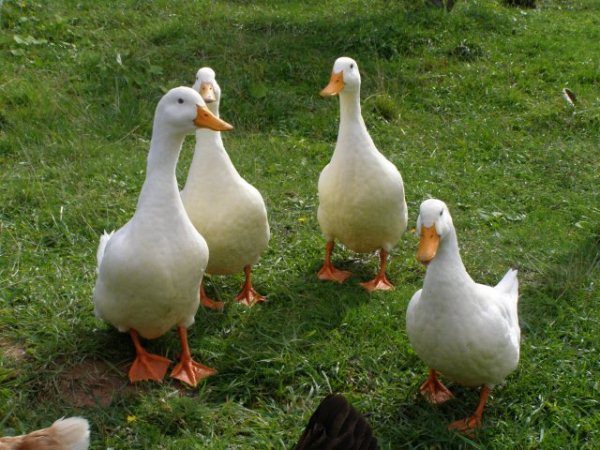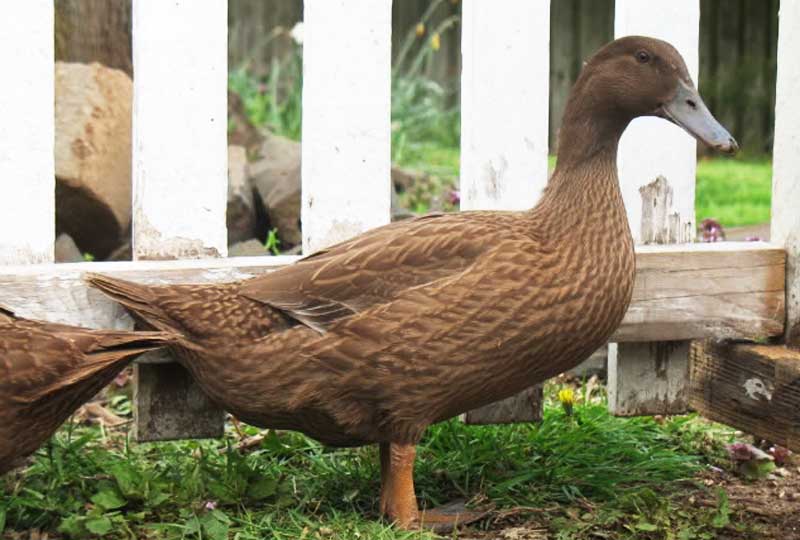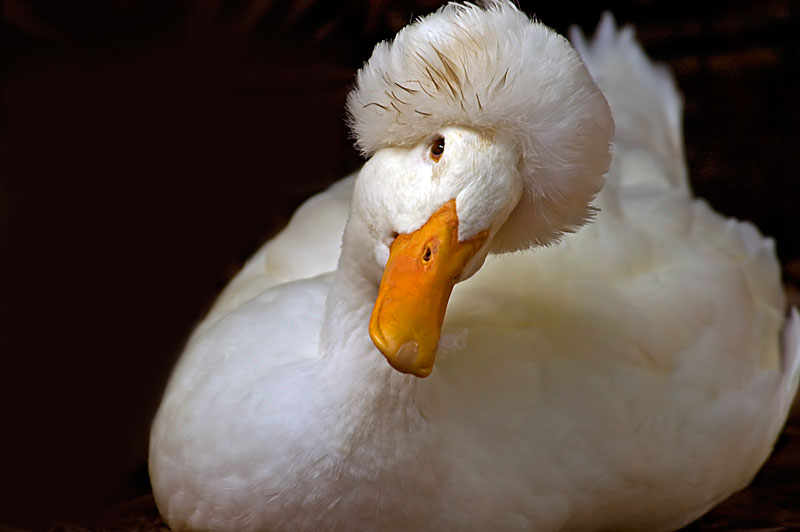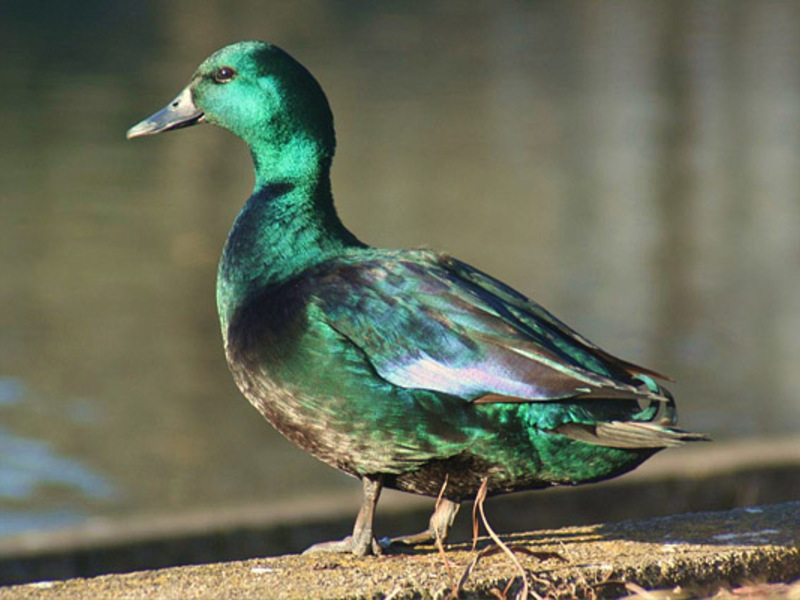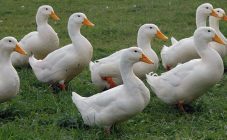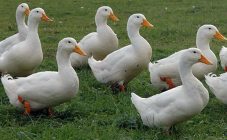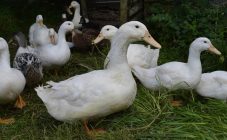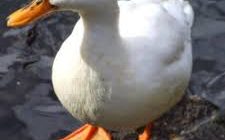Content:
Duck breeding is very popular in Russia. These birds do not require strong care, are unpretentious in food, and tolerate sudden changes in air temperature well. They have delicious, dietary meat, a very healthy liver, besides, ducks lay more than 130 eggs a year.
Duck breeds for home breeding
What are ducks? There are many varieties that are intended for home breeding. Most often, farmers choose the following breeds:
- Beijing;
- Musky, or Indoor;
- Mulard, etc.
The weight of Beijing ducks reaches 3 kg, drakes weigh up to 4 kg. A female can bring 140-160 eggs per year. When breeding, this equates to 110 chicks. The meat of the Peking duck is fat. This variety has subspecies. One of them is the French breed. According to the description, the meat of French poultry has a large amount of beneficial trace elements and vitamins. The liver of the French duck breed is of great value. They are considered large. Their disadvantage is their tough temper - they are more aggressive than other breeds.
The Indo-woman has more dietary meat than the Peking one. It is also larger. Its weight reaches 6 kg. The good thing about this breed is that it has immunity to many diseases that most other species are susceptible to. Muscovy ducks have a calm disposition, they create a minimum of noise. They are also called mutees. The fact is that they do not know how to quack; instead, they create hissing sounds similar to a snake hiss. They have many varieties of color. In the world, you can find white, brown, black and even blue mute. Mute ducks are very mannered. They bow to their brothers and disperse in different directions.
There are also breeds that are not intended for either meat or eggs. For example, the crested grebe duck. The people call this bird - grebe. The toadstool duck got its name among the people for its pungent unpleasant smell when slaughtered. Individuals of the Great Crested Grebe were very popular in the 17th-19th centuries. They were grown for feathers, which were used to decorate dresses and hats of fashionistas. This breed was on the verge of extinction some time ago. But today this threat has passed.
Duck breeds
Breeds are divided into meat, egg, meat and egg and decorative breeds.
Meat breeds of ducks
Meat varieties include:
- Beijing... Gains weight well and quickly. The taste of the meat is high. Adapted to low temperatures.
- Colored Bashkir. Diet meat, the taste of which is very high. Perfectly adapt to new living conditions. Not aggressive. Good layers. About 160 eggs can be obtained from the colored Bashkir breed per year.
- White-breasted... The weight of the male reaches 4 kg. Productive in terms of eggs. The meat is medium fat, not tough.
- White Moscow... It is similar in quality and content to the white-breasted one. Also high egg production. The meat is not fat, the taste is at the highest level. The white duck has increased immunity to many diseases.
- Ukrainian gray variety. The approximate weight of the Ukrainian duck is about 3.5 kg. The gray duck can produce up to 230 eggs per year.
- Blagovarskaya duck also applies to home. This is a distinct meat variety. Well-developed musculature. Possesses high endurance. The color is white with elements of yellow feather. The bird is considered one of the largest. At 1.5 months, the weight of a duck reaches 3.5 kg. Ideal for keeping in the household.
- Blue favorite appeared in the 90s of the last century. The breed turned out by accident. It is a type of Peking duck. But, unlike its close relative, the Blue Favorite gains weight much faster. The meat has a delicate taste. At the age of 2 months, the average weight is 3.5 kg. At this weight, the bird is ready for slaughter. This is a significant savings in feed costs. The only downside of the Blue Favorite is that the females do not hatch eggs and should be fed to other brood hens.
Egg breeds
Egg and meat-egg breeds include:
- Indian runner. It got its name due to its increased mobility. This is a type of erect duck. The number of eggs produced per year is over 320.
- Khaki Campbell - grown for meat and eggs. They are very calm and good-natured. Average weight hovers around 3.5 kg. Over 330 eggs can be produced by a Khaki-Campbell laying hen.
- Ducks breed Agidel have pure white plumage. They have a large head and wide beak. This species is generally waste-free. When slaughtering, profit can even be obtained from down, as manufacturers of goods with a down content prefer to work with a white feather. Down is used in the manufacture of vests, jackets, pillows, etc. A year with agidel, you can have about 270 eggs. This is one of the few breeds that can easily live without a reservoir. It is enough for them that there is always a container with clean and fresh water nearby.
- Moscow white duck turned out as a result of mating Peking and Khaki-Campbell. Moscow White ducks are able to survive in the most aggressive conditions. Breeding them is very profitable, as they are unpretentious in care and maintenance. The pace with which the bird is gaining weight is pleasantly surprising.
Decorative breeds
Among the decorative breeds, a duck called ogar is often found. She is attractive with her red plumage. Its distinctive feature, in addition to its red plumage, is its voice. It has high notes, the cry of the fire is similar to that of a goose.
Mandarin duck also belongs to the characteristics of decorative species. These are small ducks weighing less than 1 kg. They have a very variegated plumage, which is dominated by a bright orange color. For this they were nicknamed tangerines. Mandarin ducks are distinguished by their flight maneuverability. At first glance, it is very difficult to determine the direction of movement of a mandarin duck.
Crested is considered decorative. They look very beautiful on backyards, where there are small decorative ponds. The breed is distinguished by a solid white tuft, located at the crown.
Recently, the maned duck has entered the breeds for domestic breeding. In general, this is a wild breed. One of the main conditions for keeping a maned duck at home is the presence of a reservoir.
Emerald ducks are considered favorites among decorative breeds. They are distinguished by their characteristic emerald color. The breed is very hardy, well adapted to low temperatures.
Care and maintenance
The duck is very easy to care for and maintain. Even a beginner can handle breeding different breeds of ducklings. If poultry is bred to obtain and consume high quality, dietary meat, it is recommended to pay special attention to the quality and quantity of food. With proper feeding, ducklings gain the weight of an adult 2.5 months after birth.
Most varieties of bred ducks at home require a reservoir. The bird spends a lot of time on the water.River grass should be present in the bird's complete diet.
In order to avoid many diseases, the flooring on which the ducks live should be changed two to three times a week. This will protect the livestock from diseases transmitted through waste. Drinking water must be kept clean at all times.
Small chicks are much more difficult to carry diseases than adults. When infected with some infectious diseases, the mortality rate can be 100%. It is recommended to vaccinate chicks. Diseases such as duck plague or cholera do not require treatment. From these diseases the bird is vaccinated at a young age. If the livestock is already sick, it must be killed. In no case should the meat of a sick bird be eaten by humans. Many infectious diseases can spread from duck to human. The symptoms of most diseases are:
- Loss of appetite;
- Intense thirst;
- Curvature of the limbs;
- Sputum and mucus discharge from the beak;
- Bloody diarrhea;
- Disorientation in space.
If these symptoms are found, the farmer should consult a veterinarian.
In the winter season, the room in which the ducks are kept must be insulated. A thick layer of flooring is suitable for this, which will protect the lower extremities from frostbite.
Pros and cons
To raise ducks for profit, it is recommended to purchase a bird from experienced breeders or nurseries. Both of them have catalogs with descriptions and characteristics of the bird. Each novice breeder chooses for himself which ducks are more profitable to breed.
Among the advantages of ducks are:
- Fast weight gain. Already 2 months after birth, the ducklings weigh as adults;
- Cleanliness, which allows you to sell duck down and feathers;
- Omnivorous. In addition to concentrated feed, ducks can be fed with food waste.
There are not many shortcomings in the bird, they are not considered critical. Among them are:
- Ducks love room for walking. Birds need a reservoir. Without this, weight gain and the number of eggs laid can be significantly reduced.
- Diseases.
